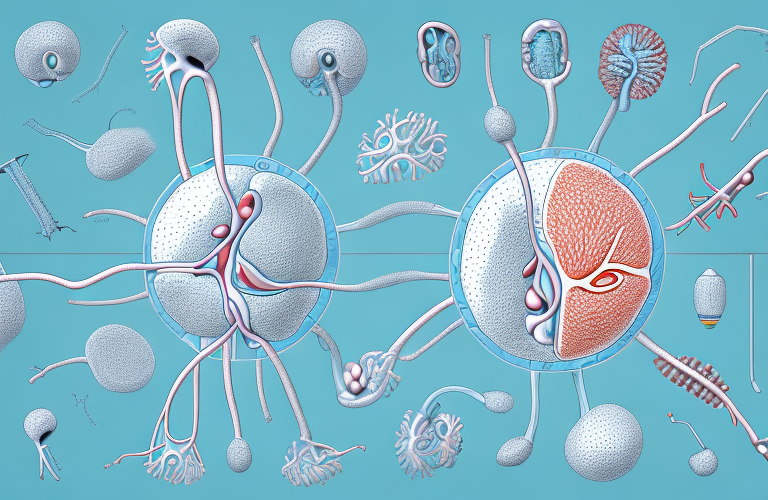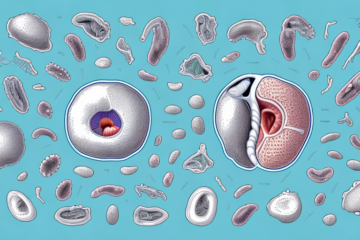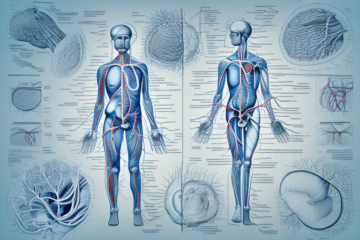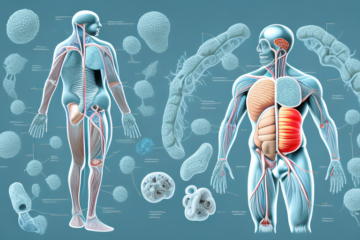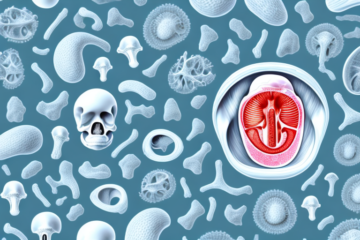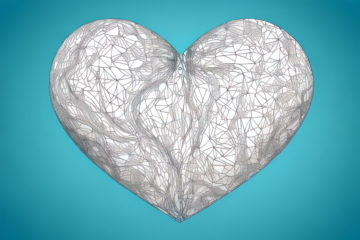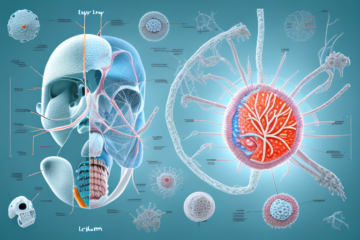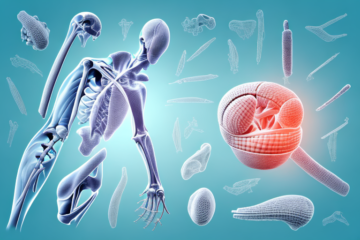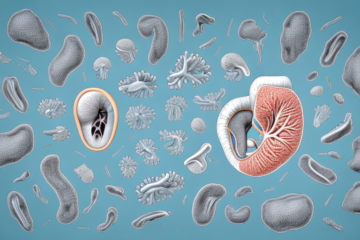The bladder is an essential organ in the human body responsible for storing and releasing urine. Its function is critical to maintaining overall health, but many people may not understand how it works or the importance of keeping it healthy. In this article, we will take an in-depth look at the bladder, its anatomy, function, and common problems it can experience.
Understanding the Urinary System
Before we delve into the intricacies of the bladder, it’s necessary to understand the urinary system as a whole. The urinary system is composed of the kidneys, ureters, bladder, and urethra. Its main function is to produce, store, and eliminate urine from the body. The kidneys filter waste products and excess fluids from the blood, which are then transported to the bladder by the ureters. The bladder, in turn, stores the urine until it is expelled through the urethra.
The urinary system also plays a crucial role in maintaining the body’s fluid and electrolyte balance. The kidneys regulate the levels of various substances in the blood, such as sodium, potassium, and calcium, which are important for proper bodily function. Additionally, the urinary system helps to regulate blood pressure by producing a hormone called renin, which constricts blood vessels and increases blood volume.
How Does the Bladder Work?
The bladder is a muscular sac situated in the lower abdomen that stores urine until it’s time for elimination. When the bladder is empty, it’s roughly the size and shape of a grapefruit. However, as urine accumulates, the bladder expands to accommodate it. The normal capacity of the bladder is around 400-600 milliliters in adults. When the bladder is full and a person is ready to urinate, the bladder’s muscles contract, forcing urine out of the body through the urethra.
The bladder is controlled by the nervous system, specifically the parasympathetic nervous system. When the bladder is full, sensory nerves in the bladder wall send signals to the spinal cord, which then sends signals back to the bladder to initiate the contraction of its muscles. However, the bladder can also be voluntarily controlled by the somatic nervous system, allowing a person to delay urination until an appropriate time and place.
Various medical conditions can affect the function of the bladder, such as urinary incontinence, urinary tract infections, and bladder cancer. Treatment options for these conditions may include medication, surgery, or lifestyle changes such as bladder training exercises or dietary modifications.
The Anatomy of the Bladder Explained
The bladder’s anatomy is relatively simple. It’s comprised of three layers: the mucosa, submucosa, and muscle layers. The mucosa is the innermost layer and is responsible for the bladder’s lining. The submucosa is a layer of connective tissue that supports the mucosa. The outermost layer is the muscle layer, consisting of smooth muscle cells responsible for the bladder’s contraction and expansion.
In addition to these three layers, the bladder also has a neck and a sphincter. The neck is the part of the bladder that connects to the urethra, while the sphincter is a ring of muscle that controls the flow of urine out of the bladder. The bladder also has nerves that send signals to the brain when it’s time to urinate. These nerves are responsible for the sensation of needing to go to the bathroom.
What Happens When the Bladder is Full?
When the bladder is full, the stretch receptors in the bladder wall send signals to the brain instructing it to release urine. At that point, the brain waits for an appropriate time to empty the bladder. This time can vary depending on a variety of factors, including fluid intake, alcohol consumption, and medication usage. The bladder may also empty involuntarily if it becomes overfilled or if the bladder muscles are weak.
It is important to note that holding in urine for extended periods of time can lead to urinary tract infections and other bladder-related issues. It is recommended to empty the bladder regularly and not to hold in urine for too long. Additionally, certain medical conditions such as bladder cancer or prostate problems can affect bladder function and may require medical attention.
The Importance of a Healthy Bladder
A healthy bladder is essential to maintaining overall urinary and reproductive system health. Some habits can damage the bladder and result in reduced function, such as holding urine in for prolonged periods, excessive caffeine or alcohol consumption, and smoking. Chronic bladder problems can also lead to urinary tract infections, which can have serious consequences if left untreated.
It is important to maintain good bladder health by drinking plenty of water, practicing good hygiene, and seeking medical attention if any symptoms of bladder problems arise. Additionally, certain exercises, such as Kegels, can help strengthen the muscles of the pelvic floor and improve bladder control. By taking care of your bladder, you can prevent discomfort and potential health complications in the future.
Common Bladder Problems and their Causes
There is a host of problems that can occur with the bladder, including urinary tract infections, kidney stones, overactive bladder, bladder cancer, and interstitial cystitis, to name a few. These problems can result from infection, nerve damage, hormonal imbalances, or other underlying health conditions. Some bladder conditions can be easily treated with medication or lifestyle changes, while others require more invasive procedures or surgery.
Urinary tract infections (UTIs) are one of the most common bladder problems, especially in women. They occur when bacteria enter the urethra and travel up to the bladder. Symptoms include painful urination, frequent urination, and lower abdominal pain. UTIs can be treated with antibiotics, but if left untreated, they can lead to more serious complications.
Another common bladder problem is overactive bladder (OAB), which is characterized by a sudden and frequent urge to urinate, even when the bladder is not full. OAB can be caused by nerve damage, hormonal imbalances, or other underlying health conditions. Treatment options include medication, bladder training exercises, and lifestyle changes such as avoiding caffeine and alcohol.
Urinary Incontinence: Types, Symptoms and Treatment Options
Urinary incontinence is one of the most common bladder problems, especially in older adults. It’s the involuntary loss of urine and can occur for a variety of reasons, including nerve damage, menopause, and pregnancy. There are several types of urinary incontinence, including stress incontinence, urge incontinence, and overflow incontinence. Treatment options vary depending on the type of incontinence, but may include pelvic floor exercises, bladder retraining, medication, or surgery.
It’s important to note that urinary incontinence can have a significant impact on a person’s quality of life, causing embarrassment, social isolation, and even depression. It’s important to seek medical attention if you are experiencing symptoms of urinary incontinence, as there are many effective treatment options available. In addition to medical treatment, lifestyle changes such as maintaining a healthy weight, avoiding bladder irritants, and practicing good bathroom habits can also help manage symptoms of urinary incontinence.
Overactive Bladder: Signs, Risk Factors and Management Techniques
Overactive bladder is a condition in which the bladder contracts involuntarily, causing an urgent need to urinate. It can also lead to urinary incontinence in some cases. The causes of overactive bladder are not entirely understood but may be due to nerve damage or hormonal imbalances. Risk factors include age, gender, and certain medical conditions. Treatment options for overactive bladder include lifestyle modifications, medication, and nerve stimulation techniques.
It is important to note that overactive bladder can have a significant impact on a person’s quality of life. It can lead to social isolation, anxiety, and depression. In addition to the physical symptoms, individuals with overactive bladder may also experience embarrassment and shame. Seeking treatment and support from healthcare professionals and support groups can be helpful in managing the condition and improving overall well-being.
Interstitial Cystitis: Causes, Symptoms, and Treatment
Interstitial cystitis is a chronic condition in which the bladder wall becomes inflamed and irritated. This condition is often mistaken for a urinary tract infection, and its symptoms may include pelvic pain, frequent urination, and bladder pressure. The causes of interstitial cystitis are unknown, but may include nerve damage or an autoimmune disorder. There is no cure for interstitial cystitis, but medications and lifestyle changes can help manage symptoms.
Research has shown that certain foods and drinks can exacerbate symptoms of interstitial cystitis. These include acidic foods such as tomatoes, citrus fruits, and vinegar, as well as caffeine, alcohol, and spicy foods. It is recommended that individuals with interstitial cystitis keep a food diary to identify trigger foods and avoid them.
In addition to medication and lifestyle changes, some individuals with interstitial cystitis may benefit from physical therapy. Pelvic floor physical therapy can help relieve pelvic pain and improve bladder function. This type of therapy involves exercises to strengthen the pelvic floor muscles and relaxation techniques to reduce muscle tension.
Bladder Cancer: Types, Stages, and Treatment Options
Bladder cancer is a type of cancer that originates in the bladder’s lining. It’s more common in older adults, smokers, and people with a history of bladder infections. The most common symptoms of bladder cancer include blood in the urine, pain during urination, and frequent urinary tract infections. Treatment options include surgery, radiation therapy, or chemotherapy, depending on the severity and stage of the cancer.
There are several types of bladder cancer, including transitional cell carcinoma, squamous cell carcinoma, and adenocarcinoma. Transitional cell carcinoma is the most common type, accounting for about 90% of all bladder cancer cases. Squamous cell carcinoma and adenocarcinoma are less common and tend to be more aggressive.
The stage of bladder cancer is determined by the size and location of the tumor, as well as whether it has spread to other parts of the body. The earlier the stage, the more likely it is that the cancer can be successfully treated. In addition to surgery, radiation therapy, and chemotherapy, other treatment options for bladder cancer may include immunotherapy and targeted therapy.
Lifestyle Changes to Improve Bladder Health
There are several things people can do to maintain a healthy bladder. Some habits that can support bladder health include drinking plenty of water, eating a balanced diet, maintaining a healthy weight, avoiding tobacco and excessive alcohol intake, and practicing good hygiene habits.
Another important lifestyle change that can improve bladder health is practicing pelvic floor exercises. These exercises help strengthen the muscles that support the bladder and can reduce the risk of urinary incontinence. Additionally, avoiding holding in urine for long periods of time and using the bathroom regularly can also help maintain a healthy bladder.
Foods to Avoid for a Healthy Bladder
Some foods can irritate the bladder and contribute to bladder problems. Foods such as spicy foods, citrus fruits, tomatoes, and carbonated beverages may irritate the bladder. It’s best to avoid these foods or consume them in moderation.
In addition to the aforementioned foods, it’s also important to limit your intake of caffeine and alcohol. Both of these substances can act as diuretics, which means they increase urine production and can irritate the bladder. If you’re experiencing bladder problems, it’s best to avoid or limit your consumption of coffee, tea, soda, and alcoholic beverages.
On the other hand, there are also foods that can promote bladder health. Foods that are high in fiber, such as whole grains, fruits, and vegetables, can help regulate bowel movements and prevent constipation. This is important because constipation can put pressure on the bladder and lead to urinary incontinence. Additionally, drinking plenty of water can help flush out bacteria and toxins from the bladder, reducing the risk of urinary tract infections.
Herbal Supplements for a Healthy Bladder
There are several herbal supplements that may support bladder health. Some of these supplements include cranberry, D-mannose, and pumpkin seed extract. However, it’s important to speak with your healthcare provider before starting any new supplements, as some may interfere with other medications or have side effects.
In addition to herbal supplements, there are also lifestyle changes that can help promote a healthy bladder. These include drinking plenty of water, avoiding bladder irritants such as caffeine and alcohol, and practicing pelvic floor exercises. It’s important to maintain a healthy bladder to prevent urinary tract infections and other bladder-related issues.
Exercises to Strengthen the Pelvic Floor Muscles
Pelvic floor exercises, such as Kegels, can help strengthen the muscles that support the bladder and can help prevent urinary incontinence. These exercises involve contracting and relaxing the muscles around the bladder and pelvic floor. Regular practice can help improve bladder control and overall urinary function.
In conclusion, the bladder plays an essential role in the urinary system, and maintaining its health is crucial for overall well-being. Understanding its function, anatomy, and common problems can help individuals make informed decisions about their health. Lifestyle modifications, dietary changes, and exercise, along with medical treatments, can help support optimal bladder function and help individuals enjoy a healthy and active lifestyle.
Aside from preventing urinary incontinence, pelvic floor exercises can also improve sexual function. Strong pelvic floor muscles can lead to increased sensitivity and stronger orgasms for both men and women. Additionally, these exercises can help with postpartum recovery, as pregnancy and childbirth can weaken the pelvic floor muscles.
It is important to note that pelvic floor exercises may not be suitable for everyone, especially those with certain medical conditions. It is recommended to consult with a healthcare provider before starting any new exercise regimen. Proper technique and consistency are also crucial for seeing results from these exercises.

